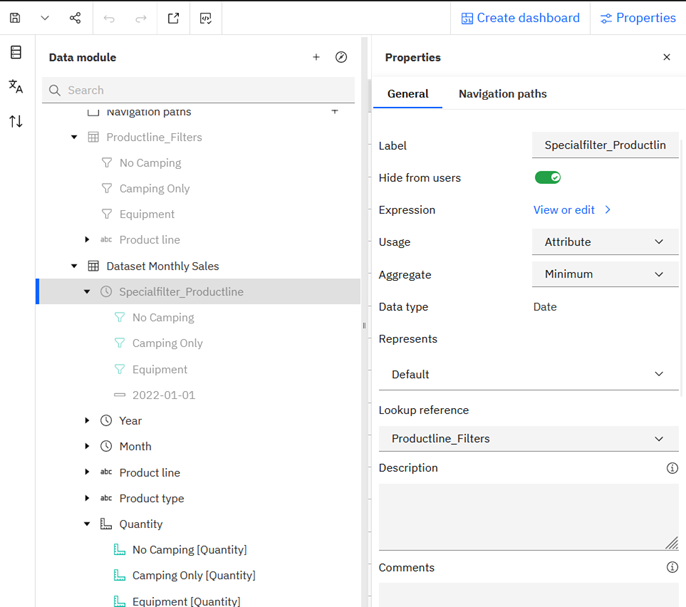Auf dieser Seite werden Informationen zu den IBM TechXchange Veranstaltungen gesammelt.
2024 January, Barcelona
Session 1564 – Highlights in Cognos Analytics 12.0.x / Focus on Data Modules

Highlights in Data Modules:
- Navigation Paths (easy to create drill up/down paths)
- (Editable) Table Views, Aliases, Shortcuts, Union, Join…
- Join Optimization for Table Connections between Different Data Sources
- Integration of Excel Uploads and Data Sets
- Integration of Calendars for Relative Times (current year, previous year, current month, previous month, etc.)
- Row-Based Security Source
- Internal IDs for all objects (no more “English Zimbabwe”)
- Testing directly in the Report or Dashboard (without Publishing)
- Opportunity for Effective Collaboration through the Integration of Multiple Data Modules (e.g., Conformed Dimensions)
- Reuse of Data Modules in a New Context
- Attribute Representation such as Geo-Information and Time Information for Automatic Selection of the Correct Visualization or for Forecasting Functions
- Pre-Sorting of Members (sorting for each column), e.g., Pre-Sorting like Months (January, February, March, April, etc.)
- Simple and Fast Sorting of Attributes within the Data Module
- Multilanguage Options (based on uploaded Excel-File or database table)
- Dynamic Data Source Switching via Cognos Macros (Data Server, Schema, Catalog)
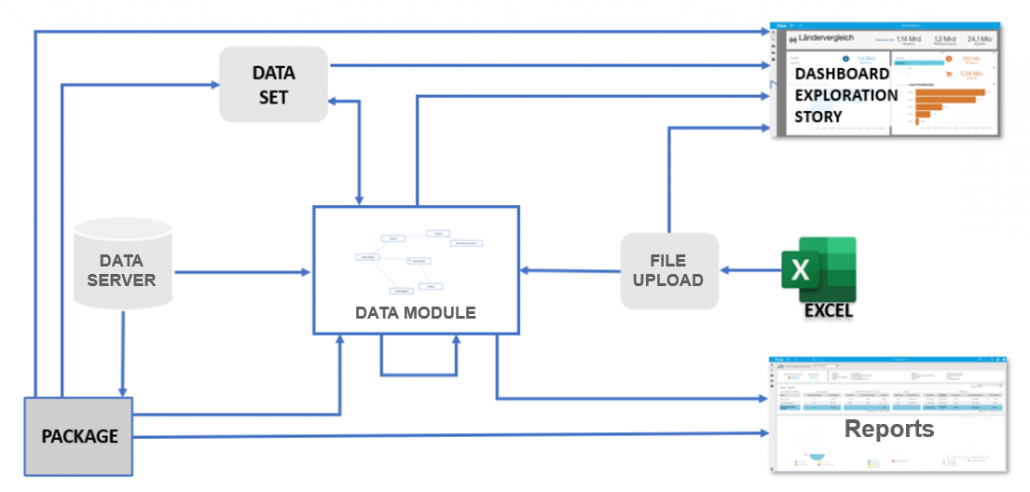
Still missing in CA 12.0.2:
- Multilanguage for Objects is only for reporting not dashboards
- Stored Procedures
- Parameter Maps (there are Workarounds)
- “real” DMR capabilities
- …read more
——–
Macro for dynamic data sources:
# let mobj = getMetadataObject ( 'MYDATASERVER' ) ; substr( mobj.expression ,14 ) #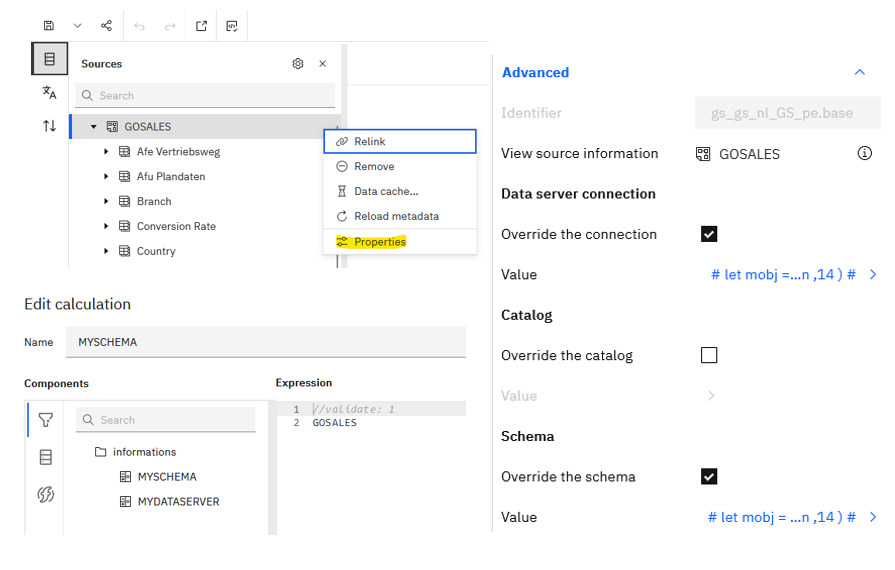
Dimensional Functions in Data Modules
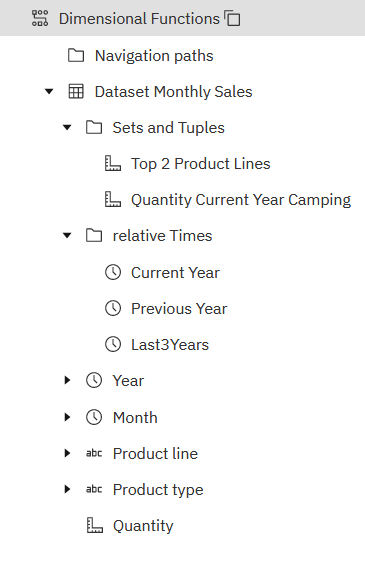
Macro for Current Year (CY):
//validate: 'custom calculation'
[C].[C_Dimensional_Functions].[Sales_Data].[Year_]-># sb( timestampMask ( $current_timestamp , 'yyyy' ) ) #Macro for Prior Year (PY):
//validate: 1
prevMember( [C].[C_Dimensional_Functions].[Sales_Data].[Year_]-># sb( timestampMask ( $current_timestamp , 'yyyy' ) ) # )
Not all dimensional functions are possible, and official support for their use is not provided.
So, try it out: For example, the best 2 product lines.

(also possible in Cognos Reports with relational data):
Macro for dynamic member access (current_year):

Example for conformed dimensions
In data modules, data sources of different types can be combined. For example, conformed dimensions can be saved as data sets and then joined in a new data module with a table from a relational database. It is important to ensure that join optimization is activated when establishing the table connections.
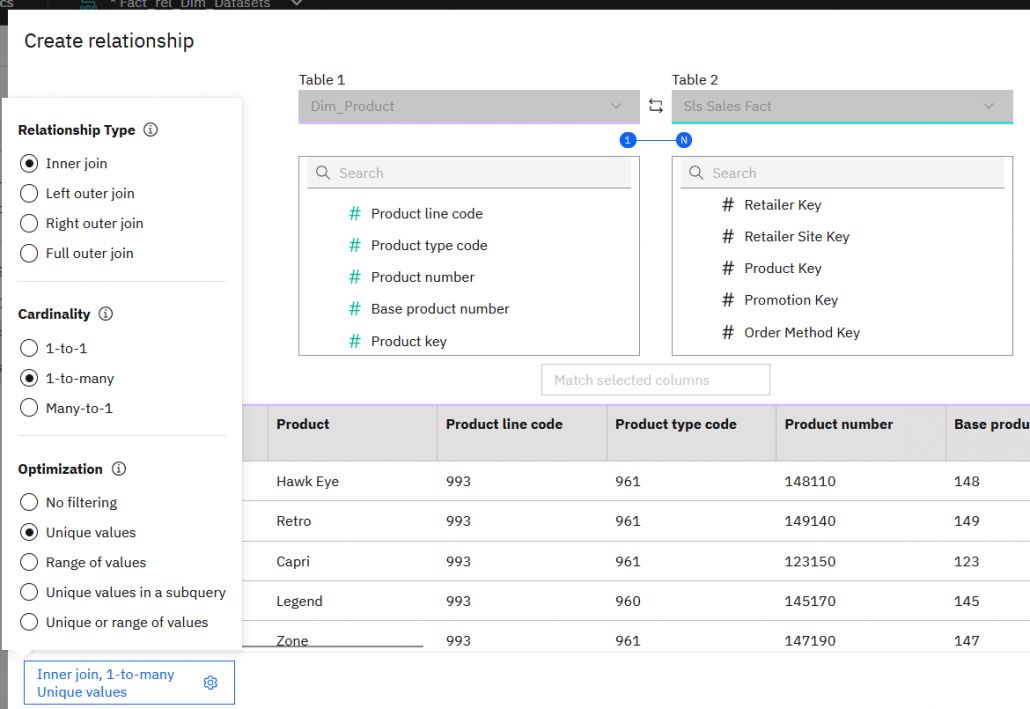
In this way, only the data from the fact table that is needed for the report will be read:
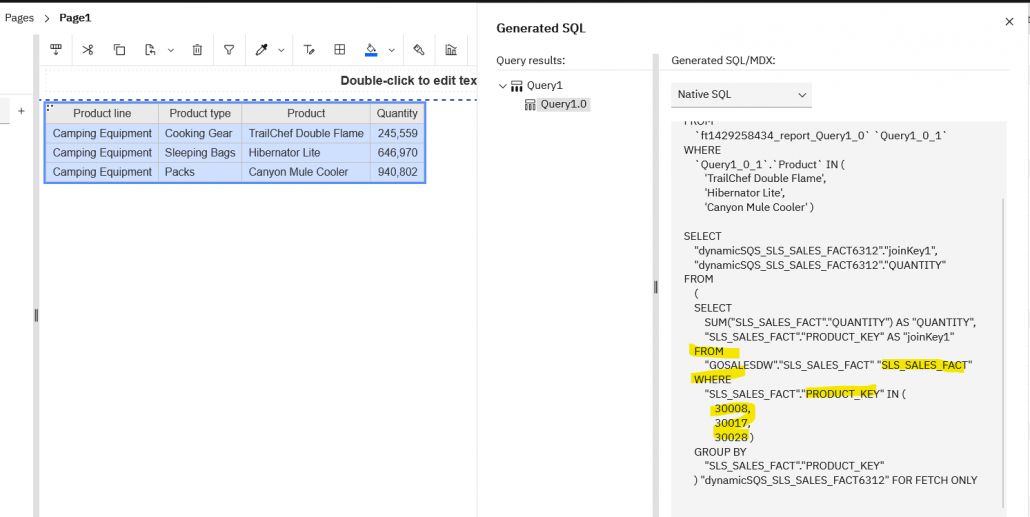
Trick: Example to use Calender Function / lookup references for special measures
